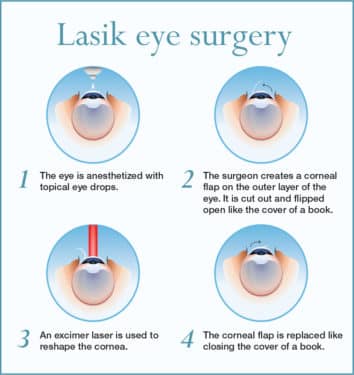Seeking Details On Refractive Lens Exchange? Discover Vital Insights And Solutions That May Change Your Method To Vision Treatment
Seeking Details On Refractive Lens Exchange? Discover Vital Insights And Solutions That May Change Your Method To Vision Treatment
Blog Article
Material Created By-Kincaid Huynh
If you're considering refractive lens exchange, you probably have a lot of questions. LASIK Farsighted Astigmatism might alter just how you see the world, using benefits like minimized reliance on glasses. However, Portland Oregon Zip to recognize the process, threats, and that certifies as a great prospect. Let's discover these essential facets so you can make an enlightened choice regarding whether RLE is right for you.
What Is Refractive Lens Exchange and How Does It Function?
Refractive lens exchange (RLE) is a procedure developed to change your eye's all-natural lens with a man-made one, dealing with vision issues like nearsightedness, farsightedness, or presbyopia.
Throughout the treatment, your cosmetic surgeon makes a tiny laceration in the eye, eliminates your all-natural lens, and inserts an intraocular lens (IOL) tailored to your vision needs. This outpatient surgical treatment typically takes around 15 to 30 minutes per eye and is done under regional anesthetic.
You'll likely observe improvements in your vision virtually quickly, though complete healing might take a few weeks. RLE is especially valuable for those over 40 or with high prescriptions, using a durable remedy contrasted to glasses or call lenses.
Your eye care expert can help figure out if RLE is right for you.
What Are the Conveniences and Risks of Refractive Lens Exchange?
Selecting refractive lens exchange can bring about considerable renovations in your vision, but it is necessary to consider both the benefits and dangers prior to making a decision.
On the plus side, this treatment can improve your vision by dealing with problems like presbyopia, nearsightedness, and hyperopia. Many people delight in minimized dependancy on glasses or contact lenses, which can greatly improve their lifestyle.
However, it's vital to consider potential dangers. Issues can consist of infection, glow, or halos around lights.
There's likewise a chance of overcorrection or undercorrection, which may call for extra procedures.
Who Is a Suitable Prospect for Refractive Lens Exchange?
If you're thinking about refractive lens exchange, it is very important to know whether you fit the profile of an excellent candidate. Typically, you might be a great candidate if you're over 40, experience presbyopia, or have high levels of nearsightedness or farsightedness.
It's likewise crucial that your vision is steady, suggesting your prescription hasn't altered substantially in the past year. If you have cataracts or various other eye conditions, you could take advantage of this treatment too.
Nevertheless, certain aspects, like unchecked diabetes or autoimmune conditions, can invalidate you. To establish your candidacy, talk to an eye treatment specialist who can examine your certain scenario and recommend the best strategy tailored to your needs.
Conclusion
In conclusion, refractive lens exchange can be a transformative alternative for improving your vision, specifically if you more than 40 or have a high prescription. While look at these guys are considerable, it's important to evaluate the risks and speak with your eye care expert to identify if you're an excellent prospect. With the appropriate information and guidance, you can make a notified decision and potentially take pleasure in a life with minimized reliance on glasses.
